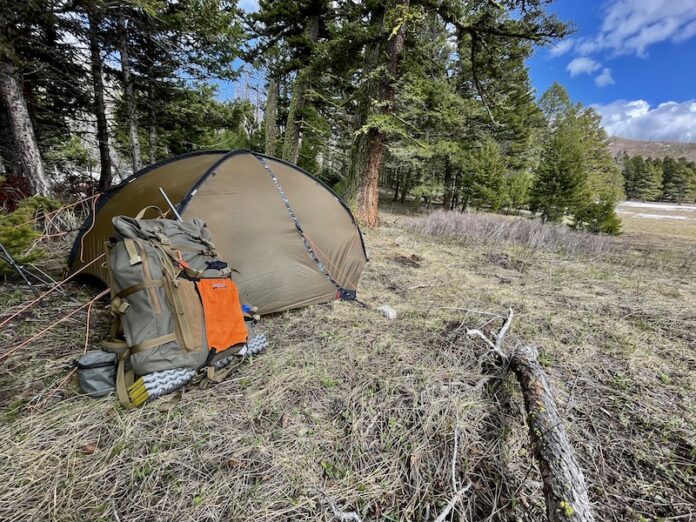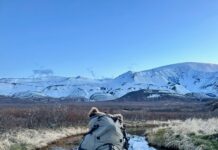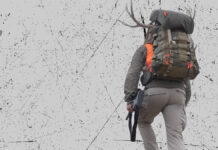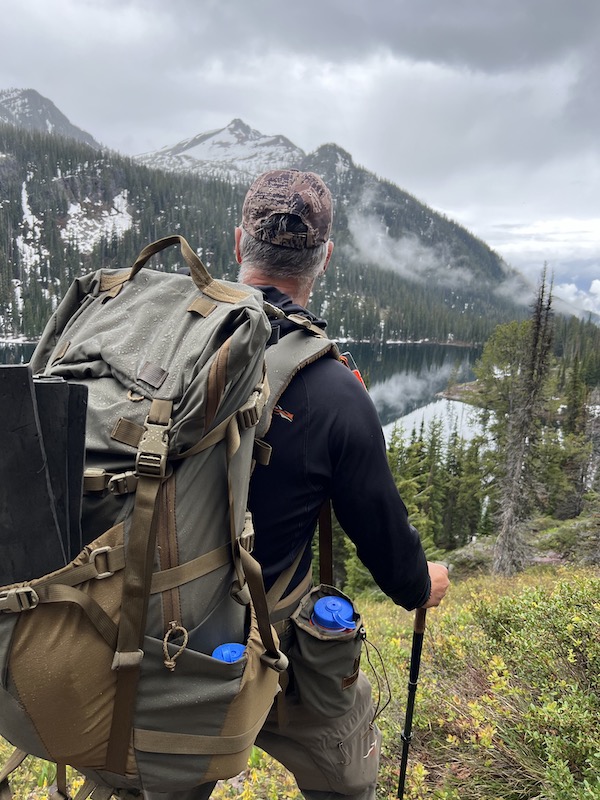
The good folks from Kifaru and Rokslide provided me with a Bedlam bag and a Duplex Light frame. The review was supposed to be for the relatively new Bedlam bag, but as this was the first time I’ve ever used a Kifaru frame— I wanted to include it as well.
Kifaru Bedlam
What Kifaru says about the Bedlam and Duplex Lite
Adding to where the Hoodlum and Hellbender left off, the Bedlam Duplex pack is a 3–4-day pack. The Duplex Lite Frame is built around the outstanding comfort of the original Duplex Frame and Suspension. The Duplex Lite Frame is a flexible, contoured internal frame with rigid, composite stays.
Bedlam Details
The Bedlam retails for $350, and the Duplex Lite for $450. it is an 80 liter (4900 cubic inches) bag and mainly constructed of 500d Cordura; it’s only offered in Ranger Green, which is a nice looking, neutral color. The stated weight of the Bedlam bag is 2 lbs 12 oz, and this is exactly what I got when I weighed it.
A lot of time went into designing this bag, with a lot of input from Rokside users. If you’re interested in this bag, it’s well worth your time perusing this thread. It’s nice to see companies actively seeking input on design from the end users.
Using The Bedlam
I’ve had the pack for a little over a year— I’ve used it on numerous day hunts, several 3-4 day hunting trips, winter camping trips and even a Spring adventure race!. While I think with some parring down, you could stretch this bag to 5-7 days, the sweet spot for me was 3-4 days. I prefer a bag that is not stuffed to the gills, but instead one that everything fits w/ just a little room left over.

Bag Access
A couple of things jumped out immediately about this bag. The first was an almost full-length, two-way zipper (the zipper terminates at the water bottle pocket). All the bags I’ve used in the past have been sans zipper, your basic roll tops. I can tell you that being able to access gear without having to empty half (or more) of the contents of your pack. This does add some weight, but the juice is definitely worth the squeeze, in my opinion.
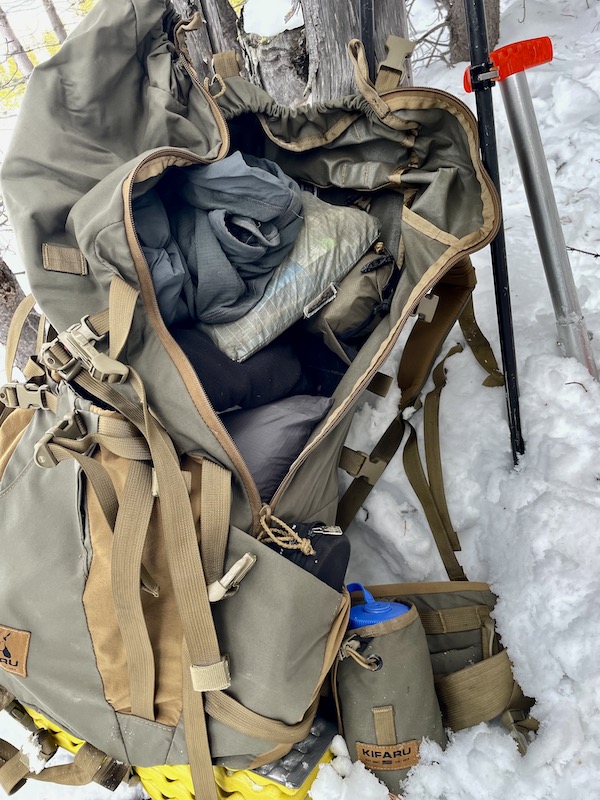
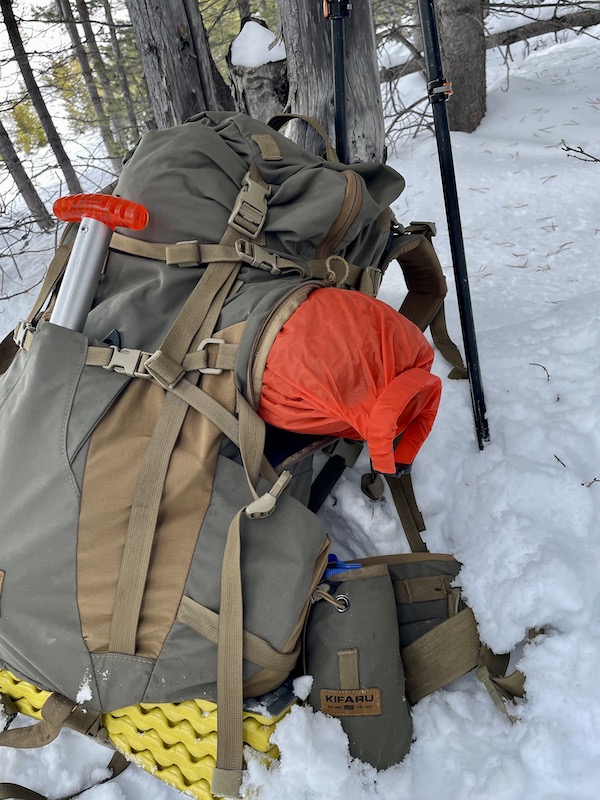
Spotting Scope Pocket
The next thing that got my attention was the pocket opposite the bottle pocket. Designed for a spotting scope, I really (really) liked this feature. Not only could I fit my Swaro ATS 65mm scope, but also the tripod that I use with it! That, my friends, is a really nice feature.
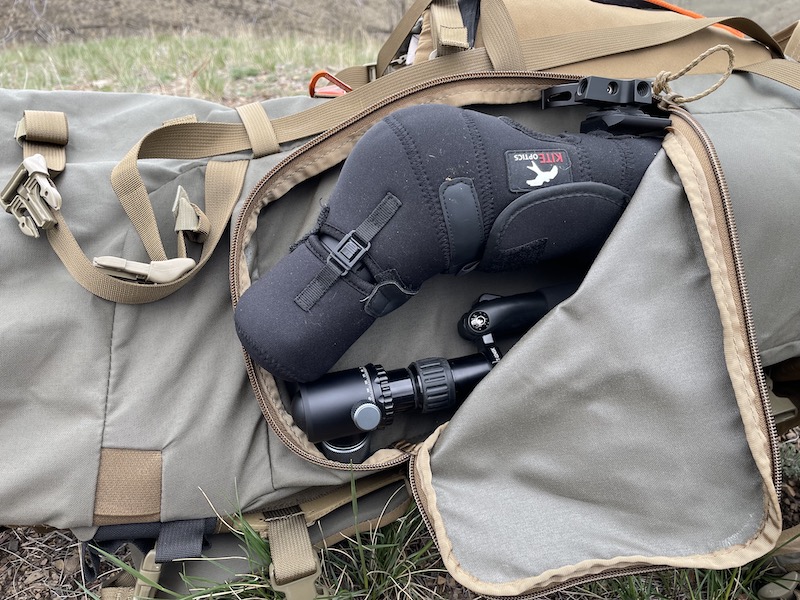
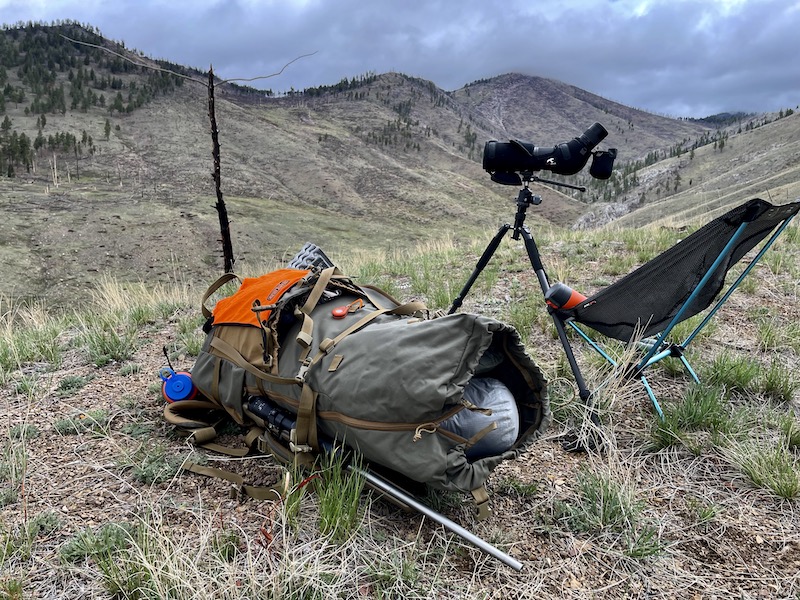
The “bottle pocket,” on the other side, easily holds two 32-ounce Nalgenes, but I used it mainly to carry my rifle. Both sides of the pack have three evenly spaced compression straps. I’ll mention this now, but Kifaru uses a unique buckle on their smaller straps- the new buckles lock the strap in, and it can’t back out. While this is good, I found it a bit of a pain to release the buckle—particularly in the cold and/or with gloves on. I’ve never had much of a problem with straps slipping and could easily live without these buckles.
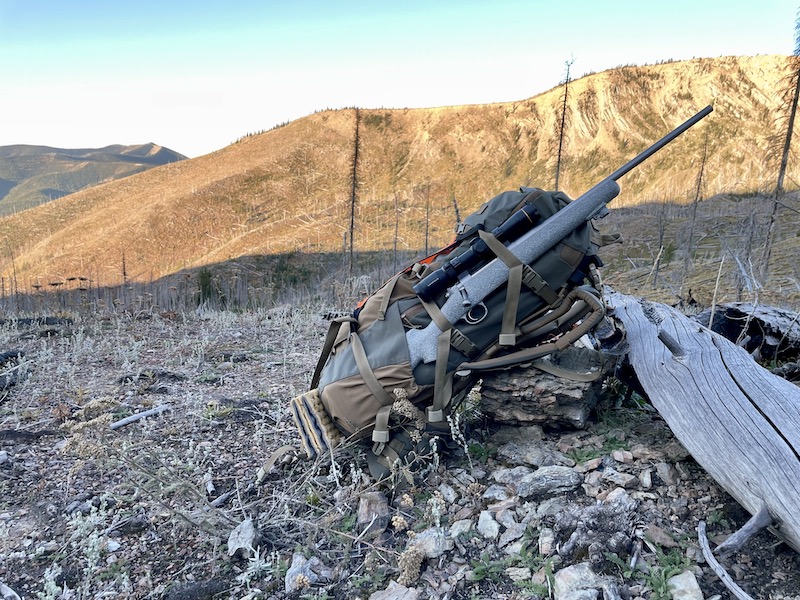
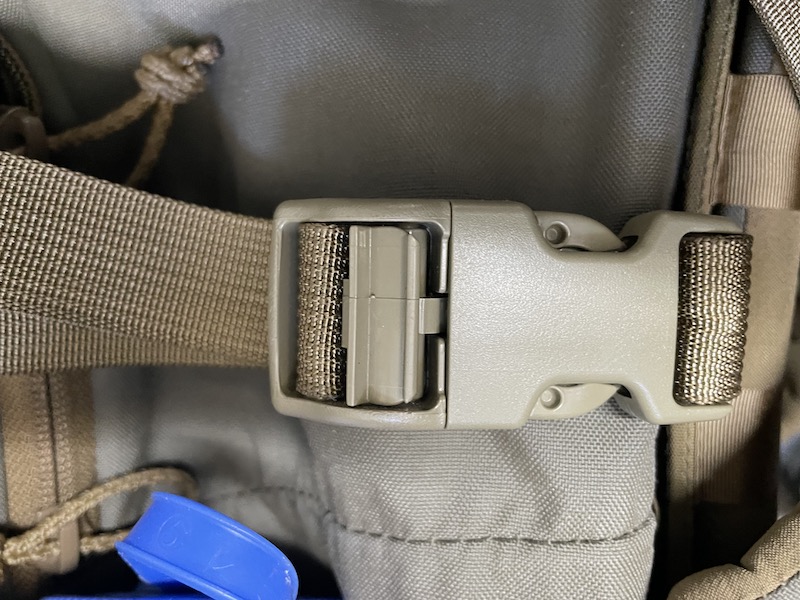
“Front” Pocket
Moving to the front of the pack (I always have trouble calling it the front because it’s in the back), there is a nice pocket. I wish all packs had a “front” pocket. I like to keep my rain gear in it and store wet stuff or things like snowshoes/avy shovel, etc.
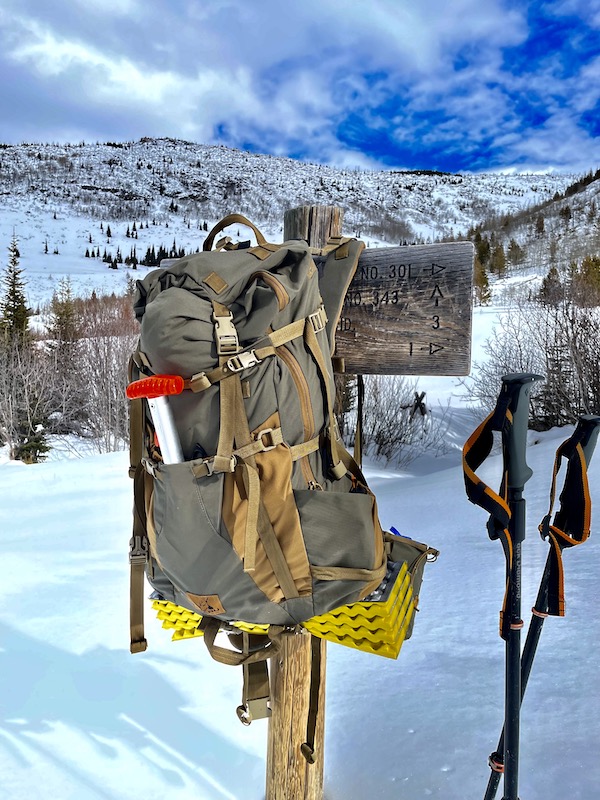
The bottom of the pack has two lashing straps, where I like to keep a section of closed cell foam pad for sitting and adding under my inflatable pad.
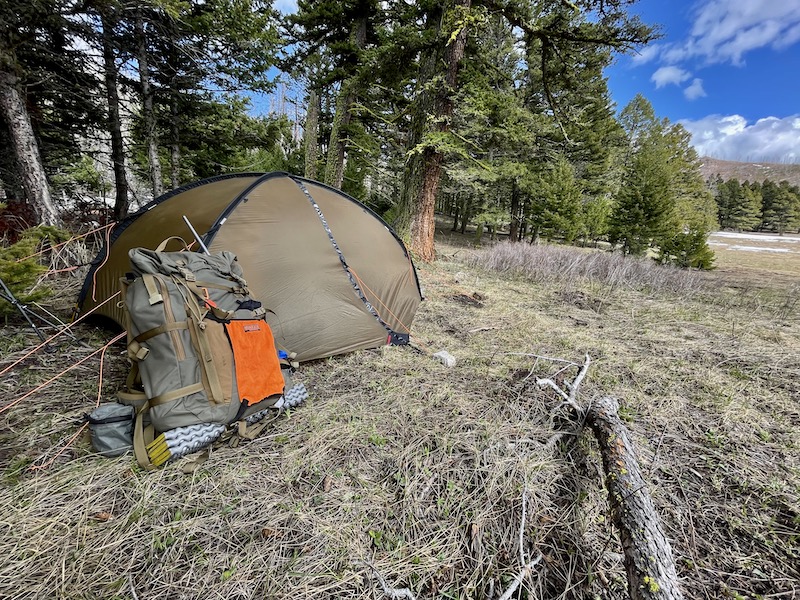
Inside The Bag
The inner bag includes a small pocket, they call a Chamber Pocket. I like to have a spot to store smaller things outside of the main bag like first aid, toiletries, etc. This pocket works for that, but it’s too small in my opinion. Doubling the size would make it much more useful.
The Duplex Lite Frame
I won’t spend a lot of time discussing the frame as it’s been around for a while, but if you’re like me and have never tried one, it’s worth some discussion. I’ll start with the frame itself. The stated weight of the frame is 3 pounds 8 oz. Mine weighed in at 2 oz less than that. It’s offered in two sizes, 24” or 26”. I have a long torso and much prefer the 26” length. The frame is a composite construction with a nice contour that makes it very comfortable. I should add that the Bedlam bag (not sure if this is a feature with all their bags or not) has three small loops that allow for a slight adjustment of the height of the load lifter straps.
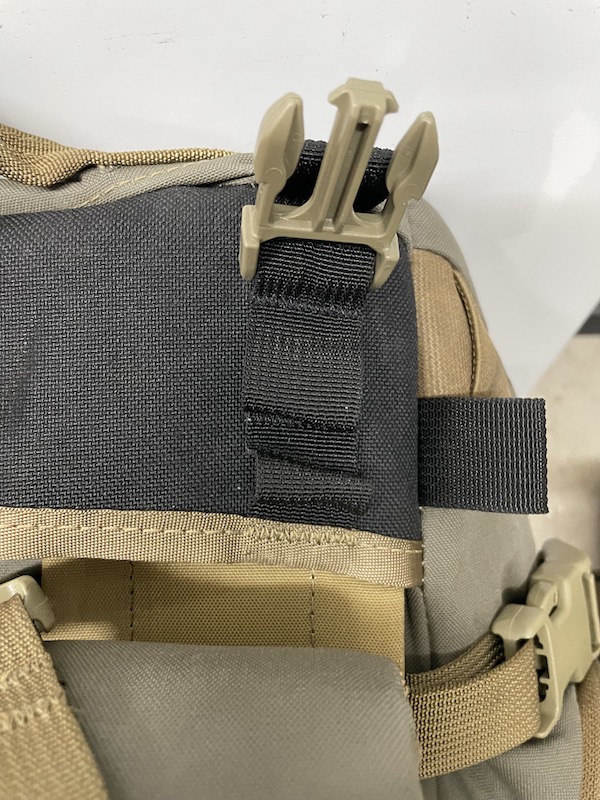
Waist Belt
The waist belt really grabbed my attention—it’s much wider than any other pack I’ve used. It’s also well-padded, and the combination of the width and padding makes for a very comfortable waist belt. I also like the single, reverse/inward pull strap—it’s super easy to get things nice and snug—no fighting—just pull. I also couldn’t help but notice how large the lumbar pad was—much larger than any other pack I’ve used.

Discussion
I got to use the Bedlam on several 3-4 hunting trips, as well as numerous day hunts. In day-hunt mode, the bag compresses down nicely for the lower volume load needed. For 3-4 day trips, I found the volume to be just about spot on; you could stretch things a couple of days longer with some judicious packing.
While this wouldn’t be the pack I’d normally choose for an adventure race, I decided it would be a good test for the Bedlam. The “race” (just an annual, friendly competition that’s been going on for 10-ish years) is a multi-day affair across the Bob Marshall in May. May means lots of high water to negotiate, lots of blowdown to contend with, and several high passes that are full of snow.

On our first day, it rained the entire day. I was a little concerned with the Cordura as it’s not waterproof, but I always keep clothing and my sleeping bag (and anything else I don’t want to expose to moisture) in dry bags. After several sketchy creek crossings (the water was rolling!), my luck ran out, and I got swept. Full-on dunked. Once I got across, I got into the pack to don an extra layer and found the contents of my pack bone dry! Evidently they use a DWR on the Cordura, I’m sure it doesn’t last forever and probably will need to be freshened up. I was pleasantly surprised.

We ended up bailing at the end of day two as the river crossing (we had two big ones to contend with) were simply not doable; the swollen creeks were challenging enough.
While my pack weight was probably only 25-30 lbs, the pack proved very comfortable, especially considering we were covering 30-ish miles/day (and hiking 14+ hours/day).
What I Recommend It For
While the Bedlam wasn’t going to have enough volume for a Dall Sheep hunt in the Brooks Range I had planned for August, I took the opportunity to use it with my weighted ruck training prior to that hunt. My pre-season regime is to hike with weight, starting at 30 lbs. and gradually moving up to 70 lbs. over the course of four weeks. I alternated between the Kifaru and my Seek Outside. Make no mistake, this is where the Kifaru really shines–it’s the best load hauler of any pack I’ve used.
I used the Bedlam on a couple of Spring bear hunts and a lot during our Fall deer/elk season. Some were backpack hunts, some just day hunts.
Sadly, I never got to pack any meat with it, but the sandbags proved to me its worthiness; I had no concerns at all if the loads were meat vs sand.
There’s a lot that goes into choosing a pack: Does it fit? Is it comfortable? Does it carry a load nicely? Is there enough volume? Etc.

A Bit Heavy
Weight is another concern for some folks, this is where the Kifaru doesn’t shine as brightly. The Bedlam with the Duplex Lite is a little over 6 lbs. The Stone Glacier with a similarly sized bag is ~ 4.5 lbs. The Seek Outside with a similarly sized bag is under 4 lbs.
Material
Another consideration is fabric. While not too long ago, all hunting packs were Cordura, the trend is now toward ultra-woven fabrics. This fabric tends to be lighter than Cordura but also nearly waterproof.
Conclusion
With that said, if you want a bombproof pack, one that can handle heavy weights comfortably, can be used for day hunts to 3-4 day trips, and has a slick feature set—then I think the Bedlam is definitely worth looking into! Available here.
Comment or ask Mike questions here.
And don’t forget to check out the rest of our backpack reviews.














